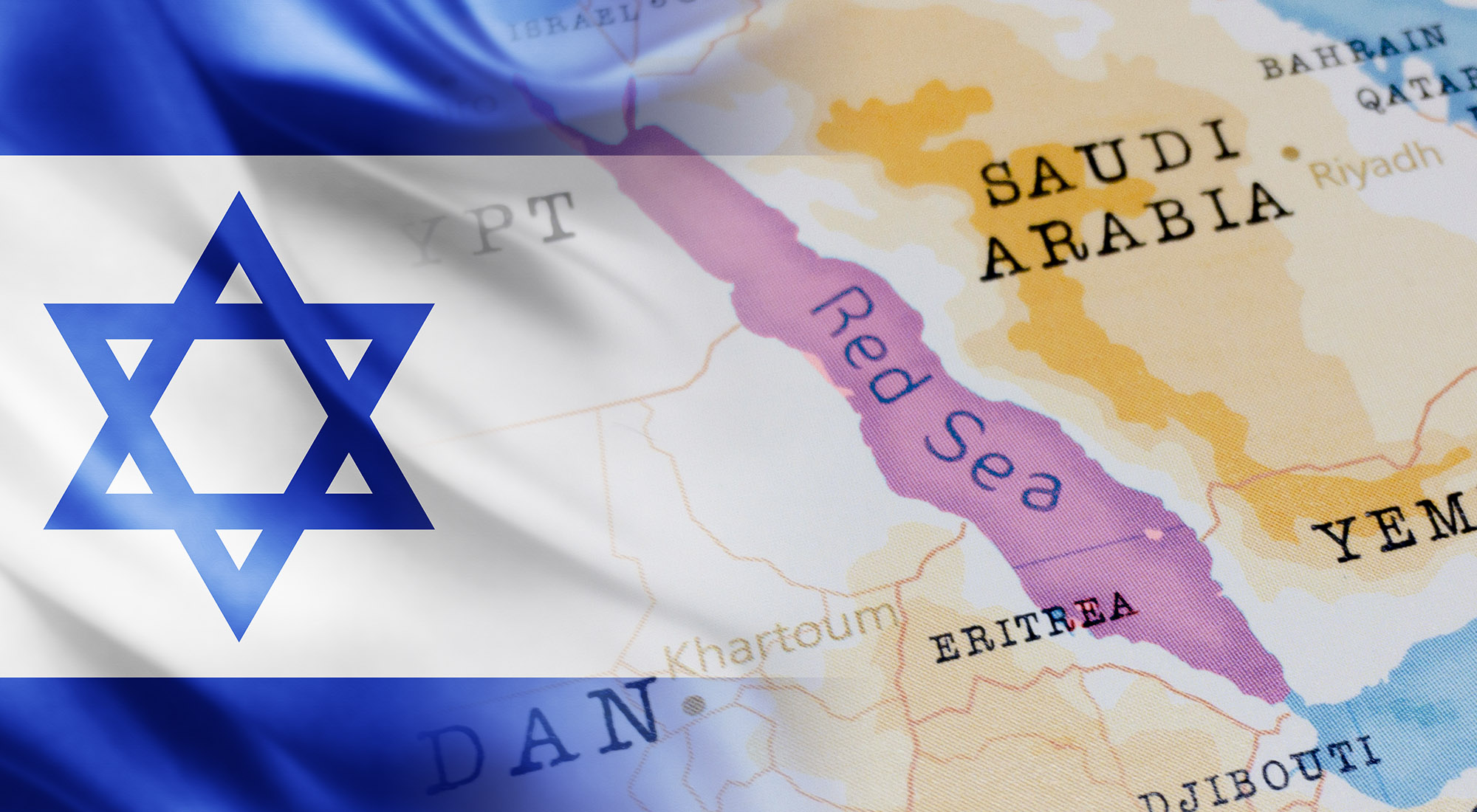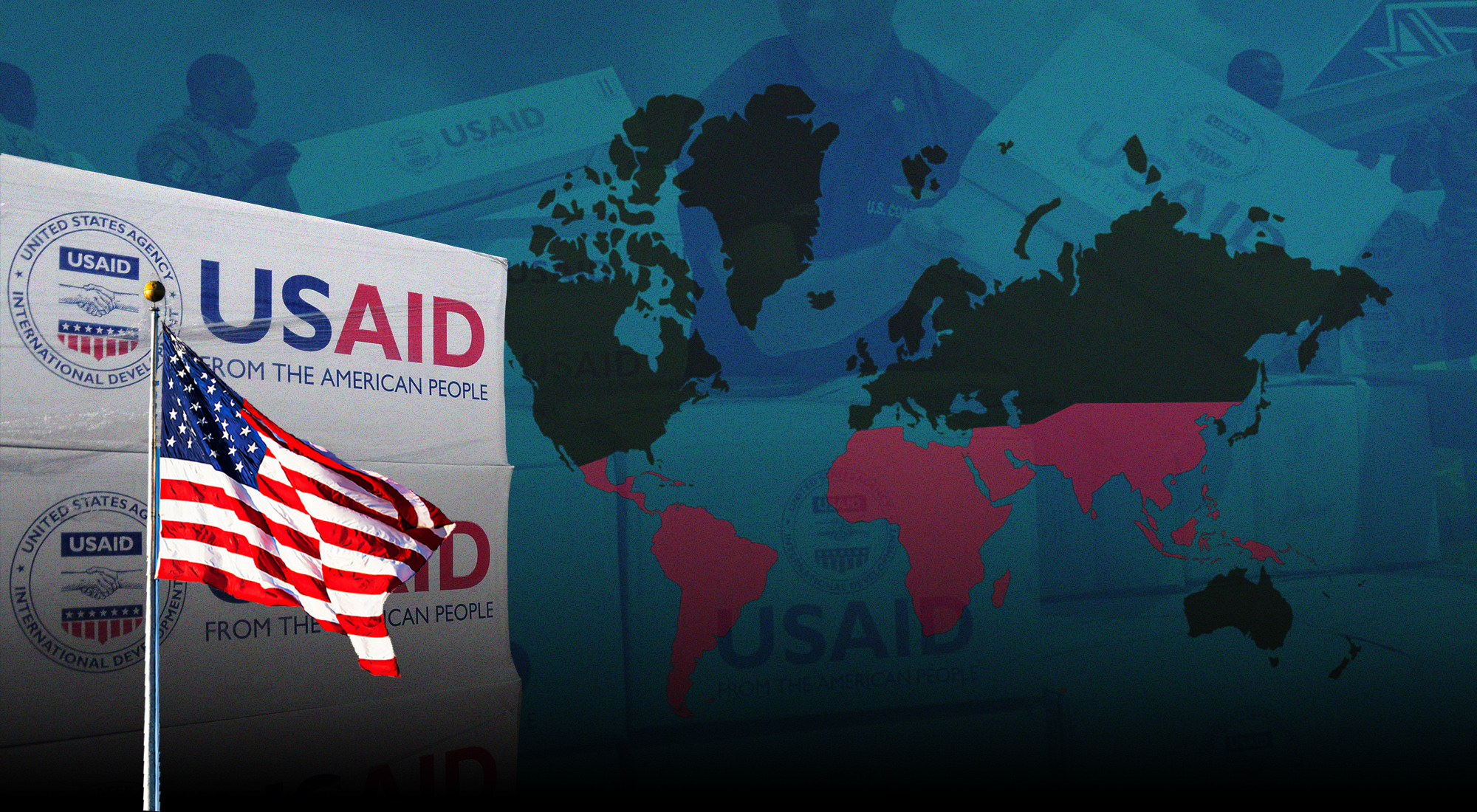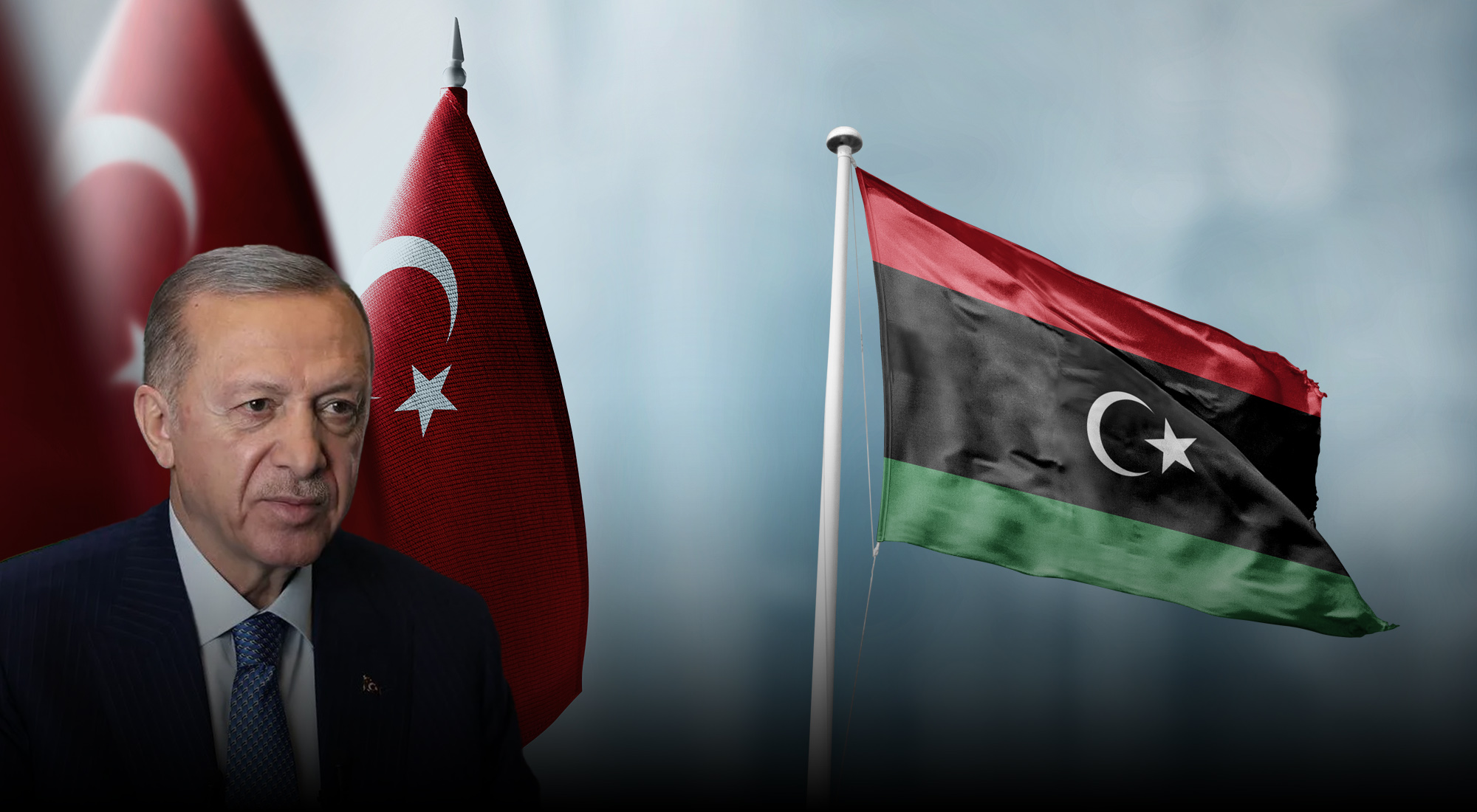Since the Iran nuclear deal (July 2015), and especially after the Gulf crisis (June 2017), the Red Sea region has become an essential pillar of the foreign policy of several littoral countries in the enlarged quadrant of the Mediterranean Sea, the Gulf of Aden and the Western Indian Ocean. This strategic reengagement in the Red Sea area fits into a fluid geopolitical scenario where Israel aims to protect and expand its trade and security routes that connect the MENA countries’ interests in East Africa and the Red Sea, creating a new potential bloc with other coastal states (Egypt and Saudi Arabia in particular). As Israel shares with those countries common visions and aspirations in the military and security fields to fight terrorism, illegal trafficking and piracy between the Red and the Arabian Seas, the creation of this bloc would also be beneficial in managing several crises (such as those in Yemen and Ethiopia) or tensions (in the Gulf) in that enlarged quadrant. This growing cooperation between Israel and Arab countries could represent an extremely important factor of transformation in the Israeli attempt to define a new and coherent focus from the Red Sea area to the Western Indian Ocean. Eventually, developments on the eastern Yemeni coast could play a crucial role in how this engagement reshapes security options and medium- to long-term security governance in the Red Sea.
Strategic dimension of the Red Sea for Israel
Israel has a 196-kilometer-long coastline on the Mediterranean and a 14-kilometer coastline on the Red Sea. Its territorial waters make up 16% of the nation’s total territory and its Exclusive Economic Zone (EEZ) extends over 22,000 square kilometers. Due to its access to both the Mediterranean and the Red Sea, the country has great maritime potential – though in its history, and in the public and political debate, the role of the sea has never been perceived as an important tool and dimension of policy. However, the deep transformation ongoing in the MENA region and the changes in several global dynamics (especially those intertwined with the multidimensional impacts of the Covid-19 pandemic and the Russian war in Ukraine) have reshaped Israeli perception of the role of the sea. In fact, these transformations have led to a new Israeli conscience of the evolving nature of threats. It is clear, from Tel Aviv’s perspective, that the biggest priority in foreign policy is to fortify its central role in the sub-region, expand its diplomatic network and seek new opportunities in the neighbourhood (in the Eastern Mediterranean, Red Sea or eastern Africa) in order to protect Israel’s offshore assets and maritime domain from the Mediterranean to the Western Indian Ocean, crossing through the Red Sea.[1]
The Red Sea, in particular, has considerable and unexpressed economic potential for Israel. It is, indeed, an important maritime chokepoint and strategic link between the Mediterranean Sea and the Western Indian Ocean. A significant volume of the world’s traffic (80%) passes through its 2,230 km maritime route, including 12% of global seaborne cargo and 40% of Asia’s trade with Europe, with around five million barrels of oil (3.8%) transported daily. This is a geostrategic trade route in which the Israeli port of Eilat could play an important role in the next years, like those in Aqaba (Jordan), Suez and Sokhna (Egypt) or Jeddah (Saudi Arabia). At the same time, Israel could play a part in the ambitious Saudi plan “Vision 2030”, even if not openly and officially, by partaking in various projects on multilateral trade and strategic infrastructures with the other littoral states. Such perspective would bring with it the potential to transform not only Israeli sea policy, but also the national approach to the maritime domain in terms of economy, foreign policy, and military strategy.[2]
From a geo-economic point of view, 98% of Israel’s trade is by sea, but only 2% of Israeli commercial traffic is conducted through the port of Eilat. It is from this port that the country exports much of its phosphate and potassium carbonate, which means that Israel is deeply dependent on three bottlenecks for its external trade: the Suez Canal and the Straits of Tīran and Bab al-Mandeb. For this reason, freedom of navigation is a factor of utmost importance for Israel. Considering that there are no significant trade relations with the countries of the MENA region – though progress is expected as a result of the Abraham Accords – it is impossible to overestimate Israel’s interest in maritime safety. This means that, in this scenario, Israel is positioning itself to play a crucial long-term role in the region’s conflicting dynamics, exploiting its pivotal position between the two seas and fostering a new assertive status in global scenarios. At the same time, the maritime sphere is a multidimensional arena in which Tel Aviv must exert effective deterrence against rivals and defend itself from threats to its security.[3]
Israel’s geopolitical interests in the Red Sea
As stated before, freedom of navigation is critical for Israeli trade and communications with Asia. Over the last two decades, Tel Aviv has sought to forge closer economic ties with giants such as China and India in order to reduce its excessive commercial and political dependence on the Euro-Atlantic bloc. These dynamics exponentially increased the strategic value of the Strait of Bab al-Mandeb, and is destined to further increase in the future. The main reason for this growing interest was the strategic importance of having access to both the Mediterranean and the Red Sea. The latter was also identified as a vital alternative route to the Suez Canal, a passage that Arab countries could have closed under certain critical security conditions.[4]
In fact, the events that marked the history of Israel (the Suez Crisis in 1956, the Six Day War in 1967, and the Yom Kippur War in 1973) were strictly connected to the role and the importance of this sea – in particular, the freedom of navigation through the straits and the risks associated with it. Not surprisingly, this connection came to the fore again in 2016 following Egypt’s controversial decision to transfer sovereignty over the islands of Tīran and Sanafīr to Saudi Arabia – both located in the Red Sea at the entrance to the Straits of Tiran.[5]
The growth in naval combat capabilities and drone and missile attacks, developed by the Houthis (also known as Ansarallah) thanks to the assistance of Iran, represents another element of threat for Israel. Since 2015, this armed militia and member of the so-called “Axis of Resistance” led by Iran, has accused Israel of participating in the Yemen war and regularly called for its destruction. Having perfected their offensive skills during the last three-year period (2019-2022) – attacking oil facilities in the Gulf (particularly in Abu Dhabi and Jeddah) – the Houthis have grown more assertive, constantly warning Israel and threatening to launch deadly strikes against its strategic assets on the Red Sea, which would potentially include Israeli vessels and southern cities such as Eilat.[6] If such capabilities were to increase further in the near future, as seems likely, the Yemeni armed group would become a significant threat to regional, not just Israeli, naval trade – in indirect coordination with other Shia proxies, like the Lebanese Hezbollah inside or outside Yemen.
Indeed, what happened to Israel demonstrates unequivocally that states and organizations can use the militarization of bottlenecks to advance their tactical and strategic interests. While maritime space entails an additional responsibility for Israel, it can also allow it to extend its strategic depth. In this regard, opportunities could also hide dangers because, from this standpoint, Tel Aviv is surrounded by pressing maritime threats from the Mediterranean and the Red Sea. In fact, the recent discovery of the huge offshore oil and natural gas fields in the Eastern Mediterranean Sea has significantly strengthened Israel’s position, not only in energy but also and above all in geopolitics. The importance of the Mediterranean dimension for Israel is strictly related to the Red Sea basin.[7] This link is a crucial factor in expanding its projections abroad.
At the same time, Tel Aviv is working with other regional players (KSA, Egypt, Jordan and also the UAE) to shape a new multilateral framework of cooperation aimed at encouraging a regional pattern of economic cooperation, informal dialogue and political interdependence to overcome the existing fault lines in this arena of competition. A clear example of this is the new fibre-optic cable project to link Israel with Saudi Arabia: Google’s “Blue Raman” route across Israel, which is part of a larger transnational internet framework in which two submarine cables run all the way from France to India, promises not only to improve speed but also to lower the cost at which information can whizz between Europe and Asia.[8] This has led to a new regional alliance between Israel and the Arab countries of the Gulf, which once regarded it as an enemy. In a similar vein, Israel and the UAE recently signed a strategic Free Trade Agreement (FTA), with several positive impacts on maritime trade in the Red Sea.[9] The completion of this deal is a historic event as it is the first of its kind with an Arab country. This accord paves the way for significant and comprehensive bilateral cooperation in terms of securing maritime trade routes, in part to protect Emirati and Israeli infrastructures against potential attacks by Iran or its regional proxies. In this regard, this agreement is a priority for both countries. This process could also strengthen the role of Israel and the UAE as innovation, logistics and transport hubs, as well as establish them as a reference point for maritime cooperation among the littoral countries of the enlarged Basin from the Red Sea to the Western Indian Ocean.[10]
Furthermore, within these regional balancing acts, which began during Trump’s tenure and continued under the Biden administration, Washington has bolstered an atypical and unofficial “relationship” between Israel and KSA (and Gulf monarchies too), as demonstrated by the Biden administration’s efforts toward a more formal normalizing of ties, such as the reported mediation of a Saudi-Egyptian-Israeli deal pertaining to the transfer of the two Red Sea islands from Egyptian to Saudi sovereignty. All these moves have fostered bilateral relations, especially within the Red Sea-Horn of Africa-Gulf quadrant, where Washington has largely outsourced its policy leadership to Israel and its Gulf partners, supporting Saudi initiatives of peace in Yemen and Sudan to hinder Iran’s leverage and to limit other great powers’ (Russia and China’s) presence in those areas. In fact, these developments reflect the geopolitical competition among regional states and great powers not just in that quadrant, but in the Western Indian Ocean as a whole. At the same time, these developments show the waning role of US presence in that geopolitical space in favour of a massive US involvement in the Indo-Pacific region. This indicates that a greater integration among Red Sea littoral countries could enhance stability and secure oil trade and freedom of navigation in the wider region, under a strong axis between Gulf countries and Israel and an external US security umbrella.[11]
Iranian factor between regional de-escalation and mounting competition
In recent years, maritime attacks on oil tankers and cargo ships in the enlarged arena, as well as drone and missile attacks from Yemen on Saudi Arabia and the UAE, have transformed the Red Sea quadrant into one of the main theatres of confrontation. The most committed regional powers in the area have undertaken a game of influence, above all directed at Sudan and the Horn of Africa. However, the sea is gaining increasing importance for Iran and Israel. From Tehran’s point of view, the civil war in Yemen and its growing presence in the Gulf of Aden has given it the opportunity to increase its regional standing and to also threaten action in the Bab el-Mandeb. In fact, the Iranian threat is not confined to Tehran’s ambition to equip itself with atomic weapons. The geostrategy of the Islamic Republic is founded on two lines, both directed towards the Mediterranean. The first is the land bridge that would allow Iran to connect its territory to the Mediterranean basin via Iraq, Syria and Lebanon; supply armaments to Ḥezbollah with much more ease; and put pressure on Israel not only from the Lebanese border but also from Syria. The second is the maritime route from the Gulf that extends to the Mediterranean through the Arabian Sea, the Gulf of Aden, the Red Sea and the Suez Canal.[12]
Iran uses its projection into the seas primarily to supply weapons and resources to its regional allies and proxies, from the MENA region to the Horn of Africa, who in turn carry out attacks on Tehran’s enemies, including Israel, of course. Hezbollah, for example, has a fundamental role in allowing the Quds Force of the Islamic Revolutionary Guards Corps to export petroleum products to Syria by circumventing sanctions. Tel Aviv has taken the necessary countermeasures since mid-2018, aware that energy supplies to the Syrian regime – which are often accompanied by loads of weapons – have become the main instrument with which the Islamic Republic finances Hezbollah. At the same time, the indirect Iranian support of Houthi militias is threatening regional stability, contributing to the reshaping of security in this area, and potentially mitigating Israel’s projection in the Red Sea.[13] If the Iranian goal is to increase deterrence and maritime awareness in order to expand its influence in the quadrant, this low-frequency escalation could lead to a significant trend of security regionalization governance, like the West Asia Quad (also known as I2U2) led by the US with India, Israel and the UAE.[14]
Moreover, in the last two years, maritime threats to Israeli security have spilled over from the Red Sea to the Gulf and Arabian Sea, basins in which Israel and Iran are engaged in a “covert war” – in reality increasingly manifest – which includes attacks and mutual reprisals against oil tankers, commercial vessels and warships.[15] The alleged Iranian attack on the Israeli oil tanker Mercer Street off the coast of Oman on July 29, 2021, marked a notable escalation in the confrontation, since it was the first incident of this type to cause casualties (two people were killed). The episodes of the past few months are, on the whole, very different from those of the last two years, as Iran has begun to almost exclusively target commercial vessels linked more or less directly to Israel. This poses a threat not just to Tel Aviv, as Israeli Foreign Minister Yair Lapid made clear when he accused Iran of “exporting terrorism, destruction and instability” and urged the world to “never remain silent in the face of Iranian terrorism” since it endangers the freedom of maritime trade for all countries.[16] Taking the same position, Defense Minister Benny Gantz affirmed that satellite images showed “the most significant Iranian military maritime activity in the Red Sea in a decade.”[17]
Regardless of the international reaction, Israel must urgently determine the strategic effectiveness of Iranian operations between the Arabian Sea and Red Sea and ascertain whether, in light of the operational capabilities of its navy, it is necessary to open another front with the Islamic Republic in these quadrants, currently outside the range of Israeli warships. The most immediate solution to neutralizing threats to freedom of navigation in the Red and Arabian Seas is to strengthen cooperation with US CentCom and the Fifth Fleet. The recent inclusion of Israel in the CentCom area of responsibility allows Israel to align its interests in maritime security with those of the United States and guarantees direct coordination between the two allies regarding the control of communication routes, waterways and straits. It is also necessary to consolidate collaboration with Egypt, which shares Israeli concerns about the geopolitical dynamics affecting the Red Sea and especially Bab el-Mandeb. Safeguarding freedom of navigation across the strait ultimately depends on the resolution of the war in Yemen, in which Iran is a central actor.[18]
Risks and prospects
In this regard, Israel needs to develop a coherent maritime strategy and conceptualize the Mediterranean and the Red Sea as fundamental components of its strategic depth. Only in this way will Israel be able to keep safe the vital maritime communication routes that cross the Gulf of Aden and Bab al-Mandeb, translate the advantages deriving from the exploitation of the huge offshore gas fields into geopolitical benefits, and understand whether its current approach and policy serves these interests. In this sense, it could be useful to enforce an enlarged regional cooperation with new and old partners from the Mediterranean to the Horn of Africa to evaluate opportunities and threats posed by the growing presence of different actors in this strategic quadrant. Moreover, this could prevent asymmetrical threats (arms smuggling, piracy, terrorism), even those posed by non-state actors, and establish – directly and indirectly – security, economic, and political cooperation with Israel. Drawing on national resources can only partially address the challenges. To overcome them, a deeper cooperation with the states of the region that share the same interests and concerns as Israel is imperative.
[1] Yael Teff-Seker, Aviad Rubin and Ehud Eiran, “Israel’s ‘Turn to the Sea’ and Its Effect on Israeli Regional Policy,” Israel Affairs 25, no. 2 (May 2019): 234-235, https://doi.org/10.1080/13537121.2019.1577037.
[2] Luigi Narbone and Cyril Widdershoven, The Red Sea Link: Geo-economic Projections, Shifting Alliances, and the Threats to Maritime Trade Flows, Middle East Directions, December 2021, p. 6, https://hdl.handle.net/1814/72105.
[3] Yoel Guzansky and Oded Eran, “The Red Sea: An Old-New Arena of Interest,” The Institute for International Security Studies (INSS), Insight No. 1068, June 24, 2018, https://www.inss.org.il/publication/red-sea-old-new-arena-interest/.
[4] Moshe Terdiman, “The Boiling Water of the Red Sea: Power Struggles and Israel’s Interests,” Mitvim-The Israeli Institute for Regional Foreign Policy, September 2018, https://mitvim.org.il/en/publication/the-boiling-water-of-the-red-sea-power-struggles-and-israels-interests/.
[5] “The Red Sea Islands Caught between Egypt, Saudi and Israel,” France 24, July 15, 2022, https://www.france24.com/en/live-news/20220715-the-red-sea-islands-caught-between-egypt-saudi-and-israel.
[6] Katherine Zimmerman and Nicholas A. Heras, “Yemen Has Become an Iranian Proxy War against Israel,” Foreign Policy, January 24, 2022, https://foreignpolicy.com/2022/01/24/yemen-houthi-uae-israel-iran-abraham-accords/.
[7] Charles W. Dunne, “The Complicated Nature of Red Sea Geopolitics,” Arab Center Washington DC, October 27, 2021, https://arabcenterdc.org/resource/the-complicated-nature-of-red-sea-geopolitics/.
[8] Italian Government, “Sparkle to Build Blue and Raman Submarine Cable Systems in Collaboration with Google,” Ministry of Foreign Affairs and International Cooperation, July 30, 2021, https://bit.ly/3KDWSWF.
[9] Government of Israel, “Israel-UAE to Sign Historic Free Trade Agreement,” Ministry of Foreign Affairs, May 30, 2022, https://www.gov.il/en/departments/legalinfo?OfficeId=6cbf57de-3976-484a-8666-995ca17899ec&skip=0&limit=10.
[10] Michaël Tanchum, “The India-Middle East Food Corridor: How the UAE, Israel, and India are Forging a New Inter-regional Supply Chain,” The Middle East Institute, July 27, 2022, https://www.mei.edu/publications/india-middle-east-food-corridor-how-uae-israel-and-india-are-forging-new-inter.
[11] Giuseppe Dentice, “Israel, India and Quad Plus: Searching for Alternatives to Western Perspectives”, in Quad Plus and Indo-Pacific: The Changing Profile of International Relations, eds. Jagannath Panda and Ernest Gunasekara-Rockwell (London: Routledge, 2022), pp. 150-163.
[12] Vivek Mishra and Sankalp Gurjar, “The US and Changing Geopolitics of the Red Sea,” Observer Research Foundation (ORF), July 16, 2022, https://www.orfonline.org/expert-speak/the-us-and-changing-geopolitics-of-the-red-sea/.
[13] Eleonora Ardemagni, “Red Sea Security: How Yemen Tests the ‘Abraham Equation’,” Italian Institute for International Political Studies (ISPI),December 15, 2021, https://www.ispionline.it/en/pubblicazione/red-sea-security-how-yemen-tests-abraham-equation-32650. For more information on the evolution of Iranian naval strategy in the Gulf, see also Ali Bagheri Dolatabadi and Mehran Kamrava, “Iran’s Changing Naval Strategy in the Persian Gulf: Motives and Features,” British Journal of Middle Eastern Studies, July 2022, https://doi.org/10.1080/13530194.2022.2105815.
[14] “US to Launch West Asia Quad with India, Israel and UAE during Biden’s Visit,” Business Standard, June 15, 2022, https://www.business-standard.com/article/current-affairs/us-to-launch-west-asia-quad-with-india-israel-and-uae-during-biden-s-visit-122061401466_1.html.
[15] Antoine Basbous, “The Secret War between Iran and Israel May Lead to an Open Conflict, Involving Their Respective Blocs,” Le Monde, July 15, 2022, https://bit.ly/3QfS2Qq.
[16] Government of Israel, “Attack on the Ship in the Gulf of Oman,” Ministry of Foreign Affairs, July 31, 2021, https://www.gov.il/en/departments/news/attack-on-the-ship-in-the-gulf-of-oman-31-july-2021.
[17] Emanuel Fabian, “Gantz: Iran’s Maritime Activity in Red Sea Is ‘Most Significant’ in a Decade,” The Times of Israel, July 5, 2022, https://www.timesofisrael.com/gantz-irans-maritime-activity-in-red-sea-is-most-significant-in-a-decade/.
[18] Assaf Orion and Udi Dekel, “Winds of Change: Israel Joins the US Central Command Area,” The Institute for International Security Studies (INSS), Insight No. 1432, January 20, 2021, https://www.inss.org.il/publication/centcom/.








